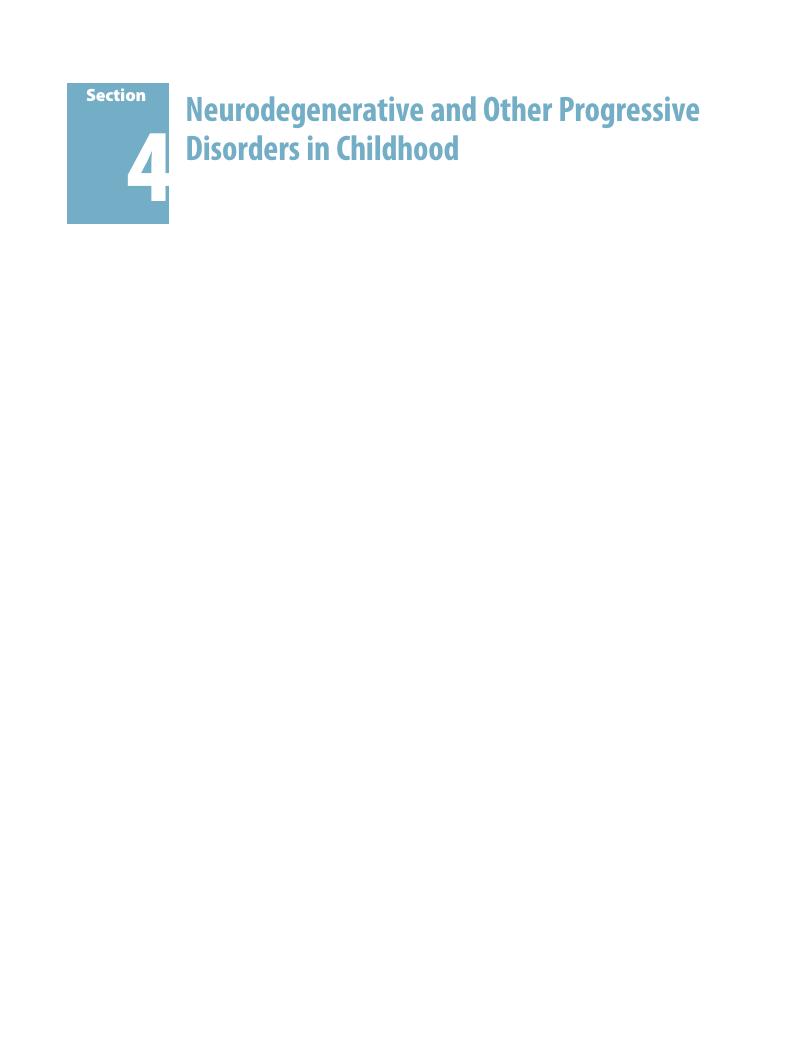Book contents
- Progressive Brain Disorders in Childhood
- Progressive Brain Disorders in Childhood
- Copyright page
- Dedication
- Dedication
- Contents
- Preface
- Section 1 Introduction
- Section 2 Rise and Decline of the Child
- Section 3 Mechanisms of Neurological Loss of Function
- Section 4 Neurodegenerative and Other Progressive Disorders in Childhood
- Section 5 Regression in Other Neurological and Psychiatric Disorders
- Section 6 Induced Regression
- Index
- References
Section 4 - Neurodegenerative and Other Progressive Disorders in Childhood
Published online by Cambridge University Press: 28 April 2017
- Progressive Brain Disorders in Childhood
- Progressive Brain Disorders in Childhood
- Copyright page
- Dedication
- Dedication
- Contents
- Preface
- Section 1 Introduction
- Section 2 Rise and Decline of the Child
- Section 3 Mechanisms of Neurological Loss of Function
- Section 4 Neurodegenerative and Other Progressive Disorders in Childhood
- Section 5 Regression in Other Neurological and Psychiatric Disorders
- Section 6 Induced Regression
- Index
- References
Summary

- Type
- Chapter
- Information
- Progressive Brain Disorders in Childhood , pp. 35 - 404Publisher: Cambridge University PressPrint publication year: 2017



